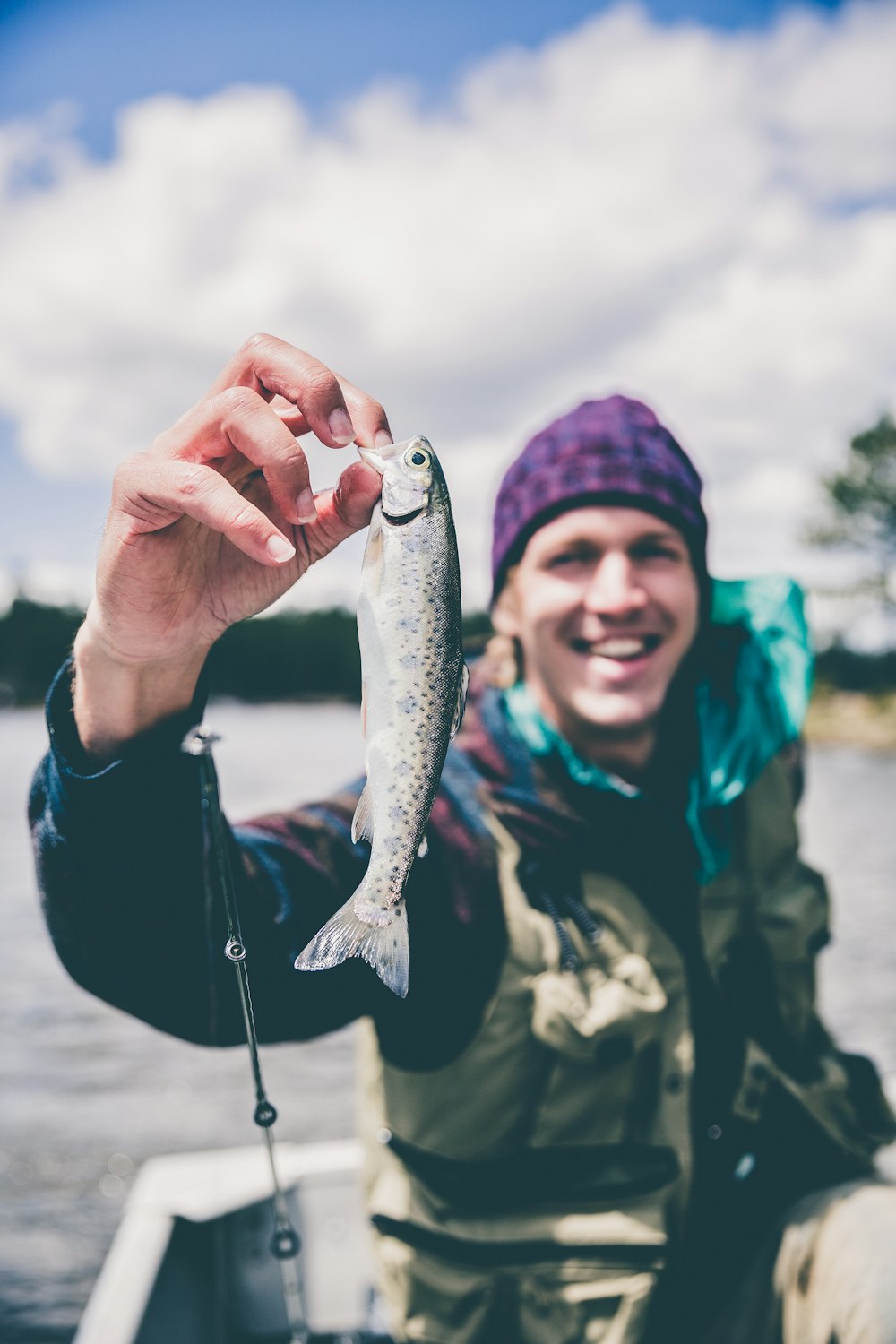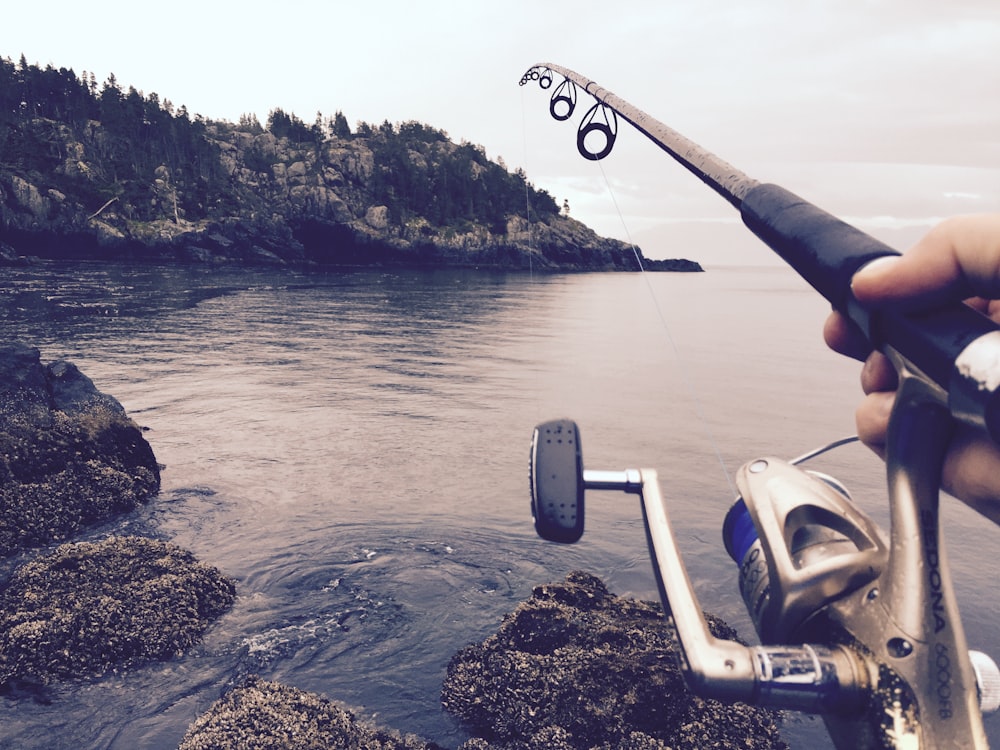
Smartphones are amazing tools. Although you can’t expect to get the same image quality as you get with a 4lb DSLR and loads of equipment and lenses, mobile phones fit in our pockets and we almost always have one on us. Read this guide to fishing photography to learn how to get great outdoors photos with your smartphone. Remember to use these techniques with 20Echo to improve your catch rate!
Here’s what we’ll cover:
- The 3 elements of photography (and how you can use them to get better photos)
- Recording data with your photographs to improve your catch rate
- Great tips for better fishing photography results
I’ll put in a few examples to give you a better idea of what to look out for. So let’s get started and learn about digital outdoor photography the 20Echo way!
The 3 Elements Of Photography – The Basics

There are 3 elements of photography that you should always keep in mind when shooting outdoor photography with a mobile device. These are:
- Light
- Subject
- Composition
Lighting
At the end of the day, photography is all about capturing light (exposure). That means it’s really important to use light to your advantage for great outdoor photography.
Light Direction
Whenever possible, try to have the sun at your back when taking a photo. For a selfie, you’ll want the sun to your front for the same effect.
Typically at mid-day, this won’t make all that much difference, but taking a photo towards the sun in the morning or late afternoon will not record a whole lot of detail other than a silhouette. Silhouettes can look great, but they aren’t very useful for recording much detail in your subject.
In low light conditions, like around sunrise and sunset, having the sunlight on the wrong side of you can work out OK if you’re using your flash, but in bright light, the flash just isn’t powerful enough.
Night Photography – When To Use Flash
At night, you’re going to need some sort of light source, and again, you want to avoid shooting with the light behind the subject. When you’re in the outdoors and there is little light around, use the flash on your smartphone.
You can keep your mobile phone set to auto flash mode, and the flash will automatically be used when it’s dark out. Another simple trick is to use the ‘always on’ mode. Push the lamp symbol in your camera’s settings to access this mode. In this setting, the flash turns on and stays on, giving you light to help compose the image and help the camera focus.
The Subject
Posing With Your Catch
If you don’t plan to release your trophy catch, make sure to take photos while it’s still alive. This simply makes for a much better-looking photograph. For a really great photo, look at the camera, or look at the fish while being photographed.
Grip your catch with both hands supporting the fish’s head and tail, with the fish held horizontally(landscape). Holding the fish out away from your body and close to the camera is a classic old fisherman’s trick to make your catch look bigger to the viewer. This angle works by making the fish look larger in proportion to your body behind it.
This technique works great, but don’t overdo it. It’s easy to see when you go too far because your fingers will look way out of proportion with the rest of your body!

Fish Portraits – Taking Close-ups
A close-up photo of your catch can really highlight the features of the animal and makes for a great wallpaper on your phone to remind you of the moment. To bring out the most in your subjects, make sure the fish is alive and wet when taking a close-up. Make it a priority to keep the fish out of the water for as short as possible if you’re going to release it.
Start by cleaning off any sand or dirt that might be sticking to your catch. Try to get the whole fish in the frame, and if possible, take your photo when the fish is holding up its fins. You’ll get the best results by focusing the camera on the eyes of the fish. One good bit of advice is to avoid using the camera’s zoom because this really lowers the image quality.
Focus
When taking a fishing photo, make sure that your smartphone camera has focused where you want it. In a picture of someone holding their catch, make sure the camera is focused clearly on the fish. Mobile phone cameras have manual and autofocus. In Autofocus mode you can tap on the screen where you want to focus for more control.
Composition – Composing Better Photos
Portrait or landscape
For looking at images on your mobile phone, a portrait photo is definitely easier. Looking at landscape shots requires you to have your phone set to auto-rotate, and then to physically tilt the phone, which isn’t that bad, but can get a little annoying.
For looking at images on laptops, or when making actual hardcopy prints for your home or office, landscape is the winner.
Using 20Echo To Record More Than Just Your Catch
They say a picture says a thousand words, well add 20Echo to your fishing photography and it’ll tell you even more! Now that you’re familiar with the 3 elements of photography, let me introduce you to the fourth: Data!
For example, let’s take a look at the following photo:

When photographing your catch with a smartphone, try to record any other useful info in the shot. In this picture, an angler holds a 15-20lb shark on the beach. Nice catch! But there’s more here that the thinking fisherman or fisherwoman can learn. If you take a closer look, you can see that:
- There’s good water color inshore (great for sharks and rays)
- There’s a weak side wash
- The beach has a gentle slope with some sandbank formations
- The sea is calm with not much swell
- It’s a hot and sunny day
There are also things that you can’t see in this image, no matter how well you analyze it. And that’s where 20Echo comes in!
At 20Echo, we’ve designed our app to record all the information to the picture, so that anglers have a detailed record of where and when the fish was caught. This picture could tell us so much more, like:
- Tide
- Precise location
- Atmospheric Pressure
- Water temperature
- Ocean Altimetry
- Water Depth
- Current speed
- Current direction
- Sunrise and sunset
- Moonrise and moonset
- Moon phase
- Chlorophyll level (water color)
- Salinity level
- Pressure Gradient
- Wind Direction
- Wind Speed
- Visibility
- Wave height
- Wave direction
Outdoor Photography When There’s No Catch
Let’s face it, you will have days when you do all the right things and still not catch anything to show for it. You can still find opportunities to shoot some great photos in these situations.
Take a look at this awesome shot for example:

Great lighting and beautiful scenery make this a great photo to share with your friends. Along with all the essential info recorded by 20echo, you can also instantly see the rod and reel you were using at the time, where your bait was, and the amount of water movement, etc.
Taking photos of your shallow water fishing spots on a low or spring low tide is a great way to study the features there, so you can note where the fish are likely to hold when the tide comes in.
Remember, fishing is always a learning curve. Taking photos on bad days makes sense as well because taking note of bad conditions is also key to learning. If the current’s running too strong or the water is too dirty for example, snap a picture and take a look at the other environmental parameters for the trip. You’ll probably be able to work out a pattern.
Planning – Remember The Background
If you’ve spent countless hours on the water, honing your skills and finding the secret spots, you’d be pretty bummed to find a bunch of fishermen crowding you out after seeing the kind of results you’ve had. With 20Echo, you have the option of sharing your data, or not.

In the scene above, we can see a couple of buildings. Landmarks in the background of your image can make it very easy for other people to find your spots.
Always consider the background of your image. There may be distracting objects and shadows there that you don’t want in the shot. An overflowing trash can for example wouldn’t add much to a photo of yourself with the catch of a lifetime!
Fishing Photography Safety
Stay aware while taking photos! The sea demands your attention and respect at all times, so make sure you’re not drifting towards trouble, and never turn your back to the sea on an exposed rocky shore. Remember, it only takes moments for things to go wrong out in the field.
Smartphones are expensive and often fragile gadgets. To make matters worse, not all of them are fully waterproof, and most importantly, they sink.
Be careful to keep your phone over dry land when photographing, and avoid holding it out over the edge of the boat. Many smartphones have been lost this way. Dropping a smartphone on a hard surface can easily cause the screen to crack or shatter, so think about getting your phone a protective cover, especially when taking it out into the elements.
5 Pro Fishing Photography Tips
After reading this guide, you’re well on your way to getting that perfect photo with your mobile device. Here’s an additional 5 easy tips for fishing photography to think about
- Be Cool
Take a deep breath and stay calm during all the action. It can be tough when you’re in a hurry to release a fish but a shaking hand can cause a blurry photo.
- Get Creative
Photography is a science and an art, but try not to get too bogged down in the technical stuff. Don’t be afraid to be creative and try different angles. Have fun!
- Keep A Clean Lens
When you take your smartphone out of your pocket to take a photo, always check to see if the lens is clean. There’s a huge difference between a photo taken with a clean lens and one covered in dust or grease. Use a soft dry cloth to clean your lens and never your fingertips.
- Record Data You Can’t See
Try to record as much info in your fishing photography to help you learn from your successes (And failures). 20Echo makes learning easier than ever!
- Use Grid Lines

Your smartphone has a ‘grid’ mode with 2 horizontal, and 2 vertical lines across the screen. Use this grid to compose your pictures using the rule of thirds. The grid can also be really helpful for the photographer, especially when out fishing from a kayak, or when you’re out on the sea and there’s some swell around. The grid will help you keep the phone level with the horizon.
Final Thoughts

It is easier than ever to capture great fishing photos in the outdoors with modern smartphones. With the help of 20Echo, you can use your mobile device for so much more.
Use the concepts and tips in this article to improve your photography the 20Echo way. So what are you waiting for? grab your smartphone, sign up and get shooting! Click Here to start your free trial!

